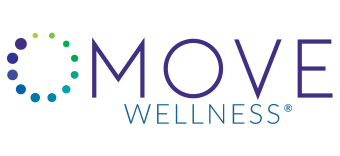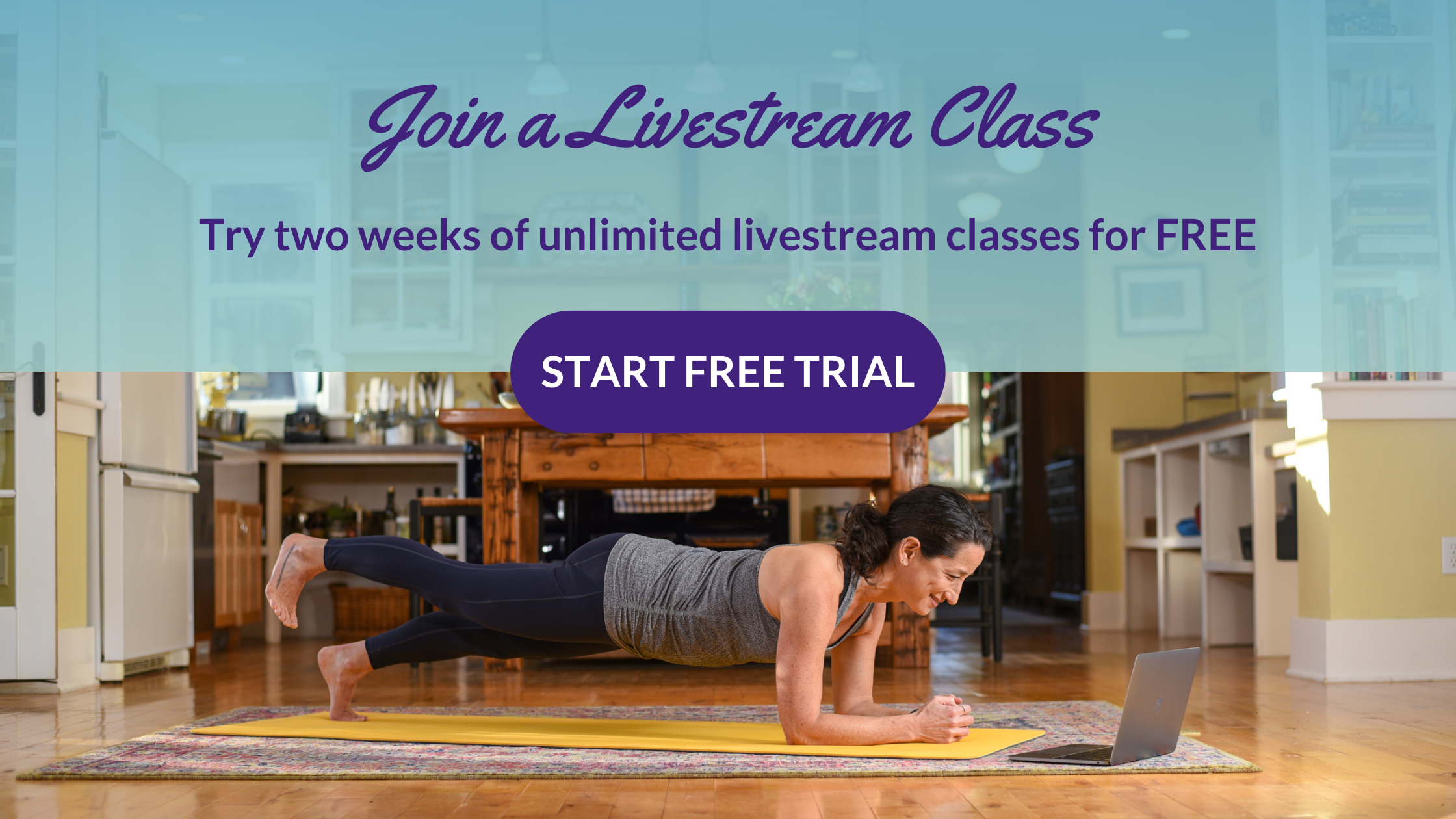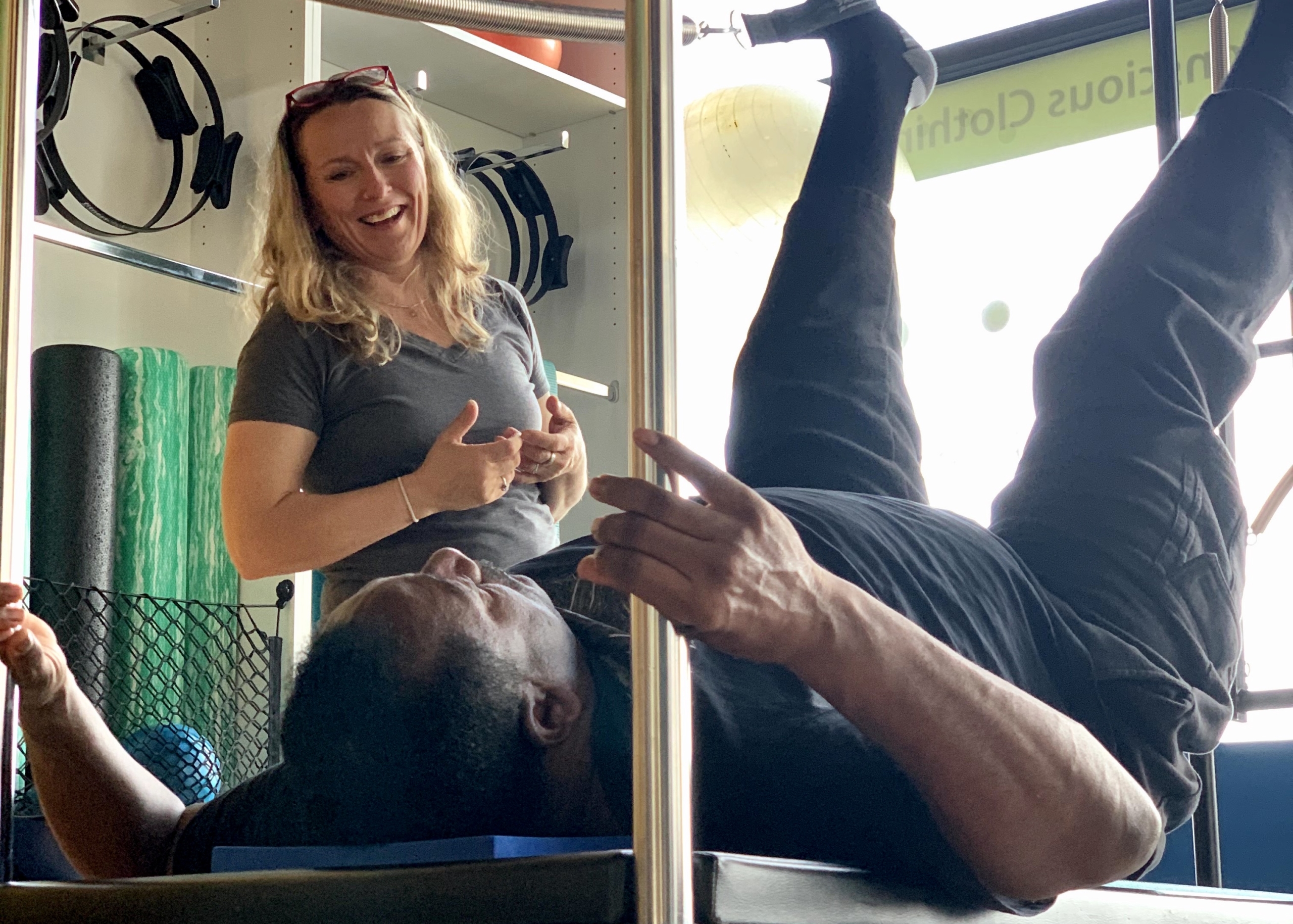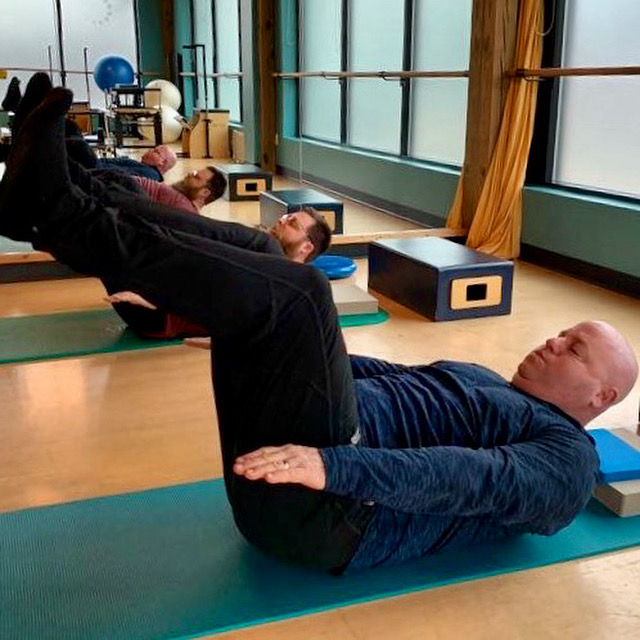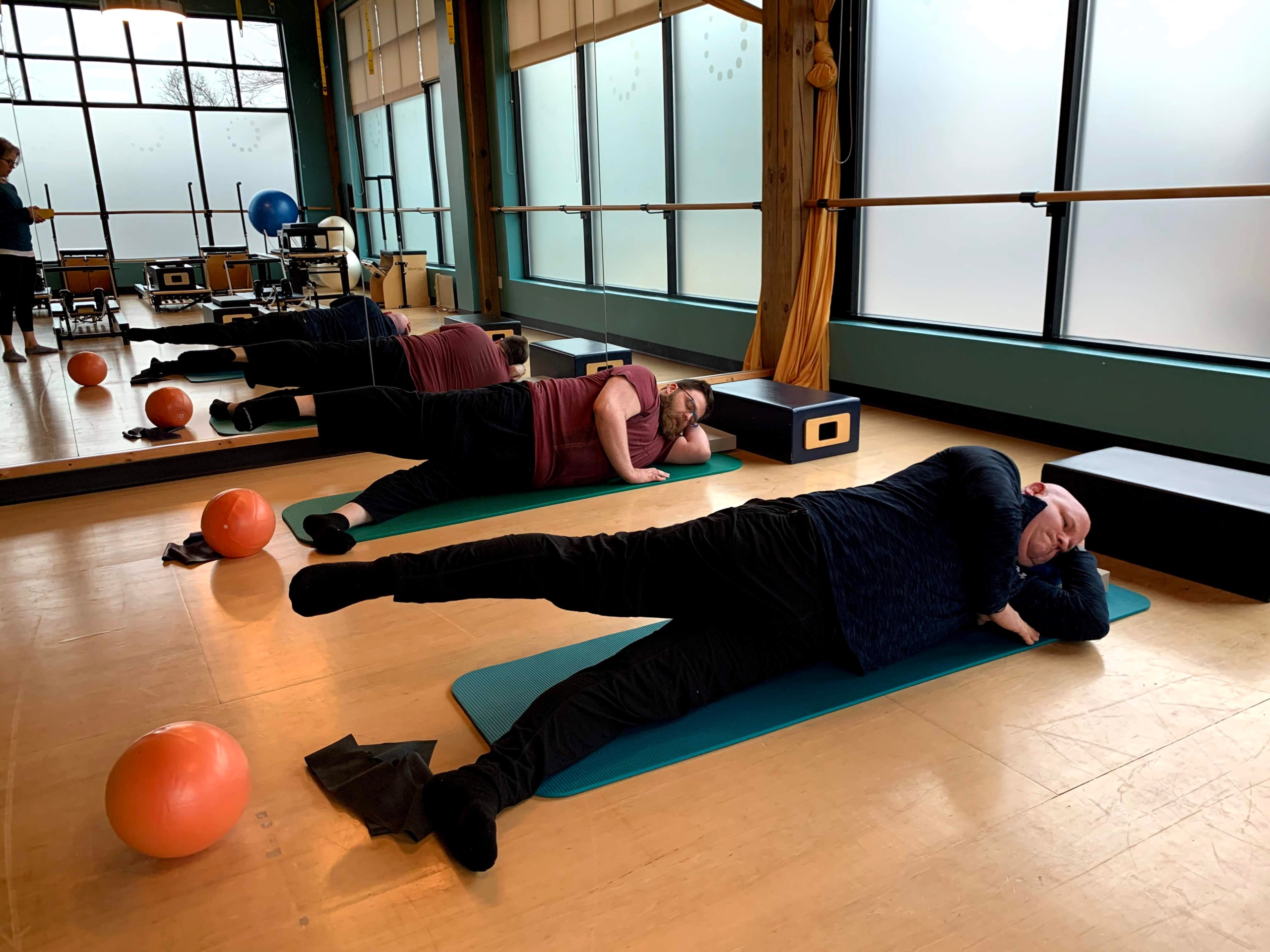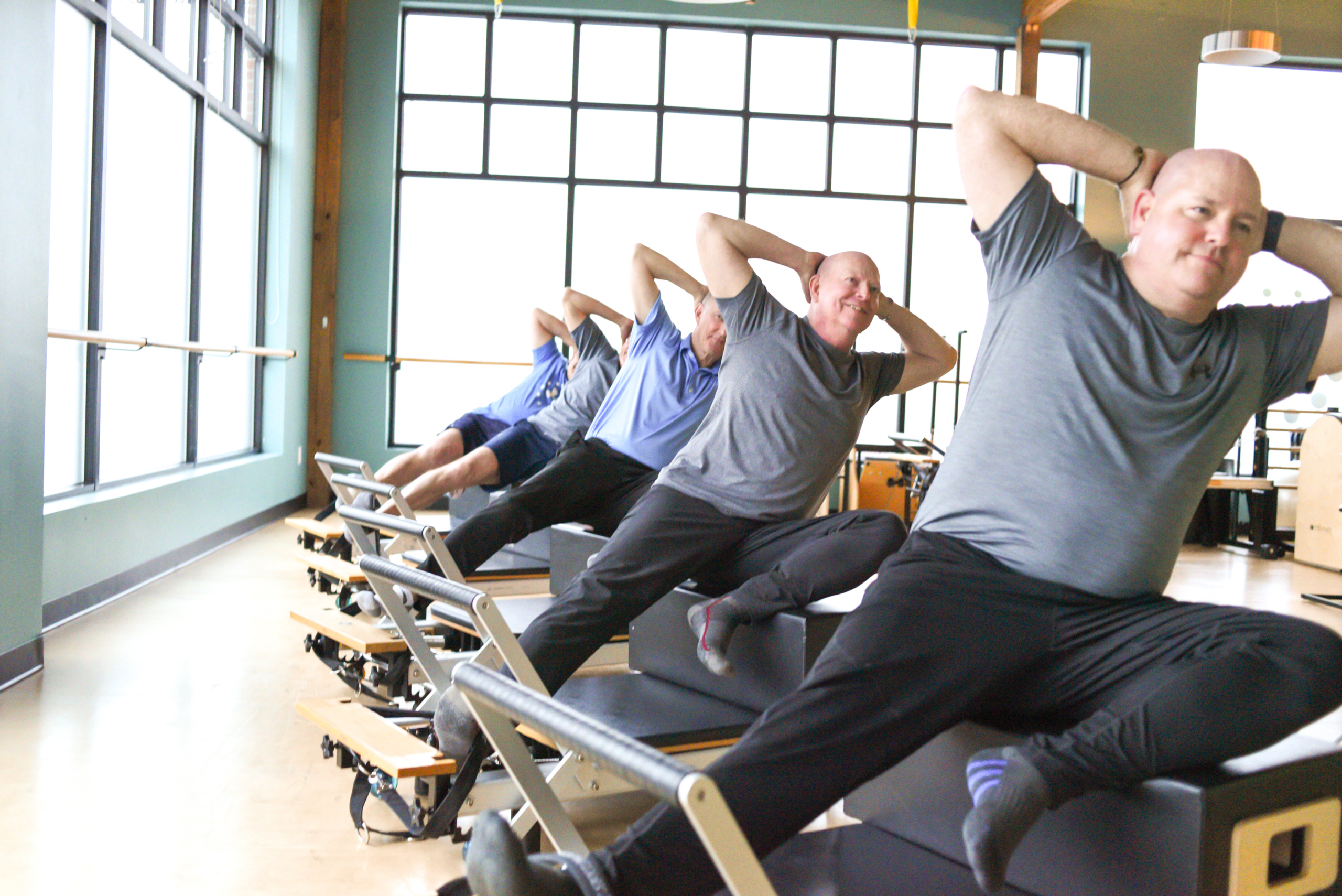Pilates for Men: Benefits of Pilates Exercise for Men
What do you think of when you picture a Pilates class? For many, ‘Pilates,’ brings up images of leggings-clad women doing light exercises that look more like stretching than an actual workout — but that’s a complete misconception.
Although Pilates doesn’t incorporate intense cardio or heavy weights, it’s still a tough workout for men and women of all ages. In fact, some of the top athletes in the world incorporate Pilates into their routines. Pilates works new muscles and movements, so it’s challenging without causing the strain some higher-impact workouts do. It is particularly effective for strengthening abdominal muscles and targeting the core.
But whether you’re a pitcher for the Chicago Cubs or a retiree looking to switch up your workout routine, you can find benefits in Pilates.
Here are answers to some common questions about Pilates, its benefits for men, and a free Pilates workout you can try from the comfort of your own home.
Try even more Pilates classes with our MOVE On Demand Series: Building a Strong Core with Pilates for Men and sign up for our free 14-day livestream class trial.
What is Pilates, exactly?
Pilates is a safe, adaptable exercise method that can be done on a mat or with a specialized Reformer machine. The Pilates method is a comprehensive workout system that uses resistance and your own body weight to stabilize your core and strengthen your body. Pilates’ adaptability makes it great for all body types and fitness levels, while still being a challenge for even the toughest athletes. This form of exercise is an efficient, effective, and safe way to increase your flexibility, develop your core, and release tension.
Pilates is versatile and offers numerous benefits for men, including improved core strength, posture, and overall body awareness. Some men dismiss Pilates as a form of exercise because it doesn’t involve high intensity cardio or heavy weightlifting. But don’t let that fool you — Pilates is a great workout that corrects muscular imbalances and builds a strong and stable core, without the impact on your joints that extreme fitness can cause.
Can you gain muscle with Pilates?
Yes. Pilates helps lengthen the muscle and build strength for men of all fitness levels.
Is Pilates good for weight loss in men?
Pilates supports weight loss by helping to create a leaner, fitter body. However, for best results, men should combine Pilates with cardio and a healthy diet.
Do men do Pilates?
Yes, we have many men in our studio who enjoy the benefits of Pilates. Top athletes, including tennis champion Andy Murray and members of the Super Bowl-winning New England Patriots, also do Pilates.
What are some benefits of Pilates for men?
Here are some benefits of Pilates that men of all ages can enjoy:
- Improved flexibility: According to Harvard Health, flexibility allows us to more easily achieve a full range of motion, which leads to both improved athletic performance (a smoother golf swing) and functional abilities (reaching and bending). Muscles get shorter and less elastic as we age, so exercises like Pilates that lengthen the muscles and improve flexibility are great for keeping you moving.
- Building strength: Pilates can be an effective strength training workout for all fitness levels; this exercise can be adapted to provide stability for beginners or provide a challenging workout for athletes.
- Alleviate pain and side effects of illness: Working the deep abs and pelvic floor can help alleviate back problems, and can be incredibly beneficial for men who have been, or will be, treated for a number of diseases. Notably, men suffering from prostate cancer have experienced notable pain relief thanks to Pilates.
- It supports weight loss: Pilates helps to create long, lean, fit bodies. There are many ways that doing Pilates supports weight loss, but it is also recommended that you eat a healthy diet and incorporate cardio to boost the metabolism.
- Safety: While high-intensity workouts are great for getting your heart pumping, they can be jarring on your joints and possibly cause injury. Pilates, especially when done with a knowledgeable trainer, is a safe, effective way to workout without the pain.
- It can be done alone or in a group: Men still wary of trying Pilates (despite the endorsement of many professional athletes!) can start off with a private Pilates session. One-on-one sessions will put you in contact with a Pilates trainer who can give you individual attention and a great introduction to this workout that’s adapted to your current fitness level. At MOVE Wellness, small group classes are limited to six students to allow for personalized instruction.
- Posture support: Pilates addresses poor posture by strengthening the muscles that support the spine and promoting better alignment, which can alleviate back and neck pain experienced by men of all ages.
- Sports performance: Pilates enhances sports performance by improving coordination, balance, and functional strength, benefiting athletic abilities in sports from golf to basketball.
Pilates as a Form of Physical Therapy
Pilates was originally developed as a form of physical therapy to help rehabilitate injured soldiers during World War I. Today, Pilates continues to be a valuable form of physical therapy, helping individuals recover from injuries and improve their overall physical fitness. For men who have suffered injuries, such as back pain or joint issues, Pilates offers a gentle yet effective way to strengthen muscles and improve flexibility and range of motion.
Pilates exercises, including mat work and reformer Pilates, can be tailored to suit different fitness levels and target specific areas of the body. This adaptability makes Pilates an ideal form of physical therapy. By incorporating Pilates into their physical therapy routine, men can enhance their overall physical fitness, reduce the risk of future injuries, and improve their athletic performance.
How quickly will you see results with Pilates?
Everyone responds differently to Pilates, but if you maintain a somewhat regular practice, you’ll see changes quickly. According to Joseph Pilates, the creator of Pilates: “10 sessions — feel the difference, 20 sessions — see the difference, 30 sessions — have a new body.”
Getting started with Pilates
Pilates can be done on a mat or with specialized equipment. Mat Pilates classes, like the 20 minute workout above, tend to focus on core work and require you to support the stabilization of your body. Pilates equipment, like the Cadillac or Reformer, gives you a frame to work within that is often more helpful than a mat, but can be more challenging when springs are added or taken away. Working on the equipment can also target and tone specific areas of your body very efficiently.
If you’re new to Pilates or fitness in general, it can be worthwhile to begin with a private Pilates session to get individualized attention and a more customized Pilates-based fitness program. You can also explore Pilates on your own and learn the Pilates basics with a beginners Pilates workout.
Pilates Workout for Men
This 20 minute Pilates workout will take you through exercises that will help with the tight hamstrings and shoulders that are common for men, but experienced by all. All you need is your mat!
